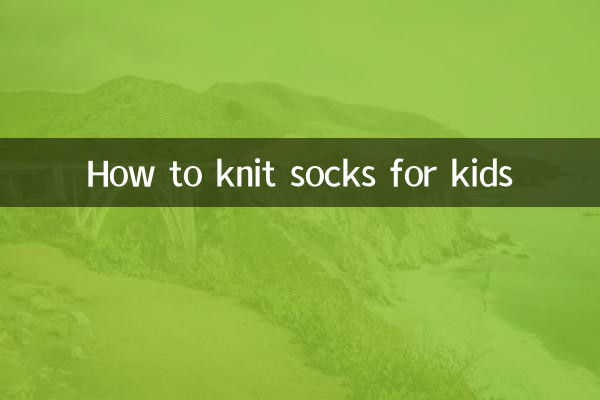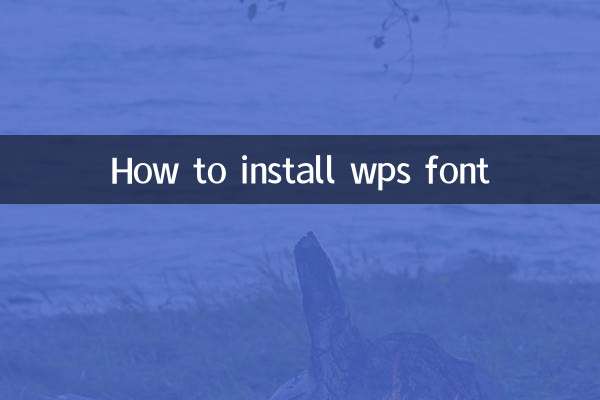How to knit socks for kids
In the past 10 days, the popularity of hand-knitted knitting on the entire network has continued to rise, especially "how to knit children's socks" has become one of the hot topics. Many parents and craft enthusiasts want to make warm and cute socks for their children through knitting. This article will combine recent hot topics to structure the steps, tools and precautions for knitting children's socks, and provide relevant data references.
1. Popular topics on hand-knitted knitting recently

The following are the keywords related to hand-knitting with high search volume across the entire network in the past 10 days:
| Keywords | Search volume (period average) | Hot Trends |
|---|---|---|
| Kids sock knitting tutorial | 5,200+ | rise |
| Baby wool socks illustration | 3,800+ | Stablize |
| Hand-woven children's socks | 4,500+ | rise |
| No foundation knit socks | 6,000+ | Soaring |
2. Tools required to weave children's socks
According to feedback from craft enthusiasts, here is a list of basic tools for knitting kids’ socks:
| Tool name | Specification suggestions | Description of use |
|---|---|---|
| Yarn | Special cotton thread for babies (medium thin) | Soft and skin-friendly, suitable for children's skin |
| Knitting Needle | 2.5mm-3.5mm double-head pin | Easy to knitting |
| Scissors | Small and sharp | Cut the thread |
| Marking buckle | Plastic or metal material | Mark the weaving position |
3. Steps for knitting socks for children
Here are the steps to explain how to weave children's socks (taking children aged 1-3 as an example):
1. Needle-starting stage
The recommended number of needles is 48-56 (adjust according to the thickness of the yarn), and use a ring needle or a double-headed needle to form a ring knit.
2. Sock knitting
The knitting height is about 5-7cm, and you can choose to increase elasticity by single-thread or double-thread needle method.
3. Heel handling
After the minute hand, the heel part is knitted separately, and it usually takes 10-12 rows to and from.
4. Foot part
Reconnect all needles and continue to knit to the toes, length reference:
| Children's age | Foot length (weaving recommendation) |
|---|---|
| 0-1 year old | 6-8cm |
| 1-3 years old | 8-10cm |
| 3-5 years old | 10-12cm |
5. Needle collection skills
Use the kitchen needle receptacle method or the flat needle receptacle method to ensure that the toes are smooth and comfortable.
4. Frequently Asked Questions
Based on the recent forum discussion, the following high-frequency issues have been sorted out:
| question | Solution |
|---|---|
| Socks slip easily | Increase rib edge length or add elastic bands to the socks |
| Uneven toes | Reduce 2-4 needles before retrieving the needle, retrieve the needle in batches |
| Inappropriate size | Measure the child's foot length before knitting, increase/decrease 10 stitches every 2cm |
5. Popular knitting patterns recommendations
The most popular children's socks on social platforms recently:
1. Cartoon animal patterns (bear, rabbit, etc.)
2. Rainbow stripes design
3. Polka dot love mix
4. Festive theme (Christmas, Spring Festival elements)
6. Safety precautions
1. Choose Class A safety certification for infants and toddlers
2. Avoid using small beads and other decorations that are prone to fall off.
3. Make sure the inner thread end is smooth to prevent the feet from being worn
4. It is recommended to wash gently in warm water before first wearing
Through the above structured content, even novices with no foundation can quickly master the knitting skills of children's socks. It is recommended to start practicing with the basic monochrome model first, and then try complex patterns after proficiency. Remember to add the hashtag #handmade knitting# when sharing works on social platforms to share your experiences with more enthusiasts!

check the details

check the details